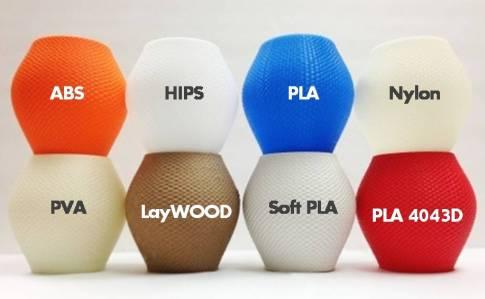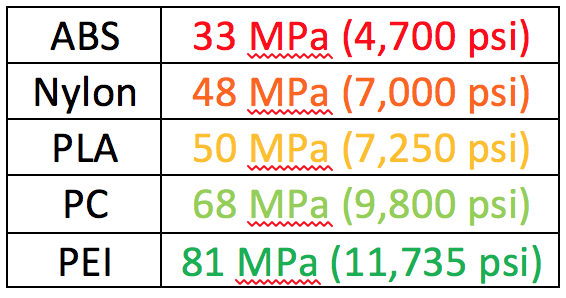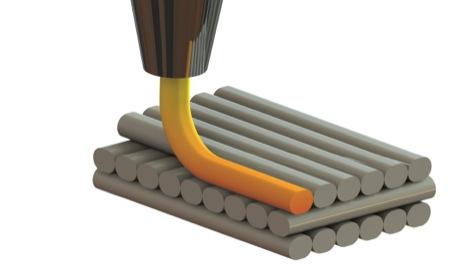 Every now and then, while discussing the merits and technicalities surrounding 3D printing, someone who obviously has not been reading very closely (ahem!) will dismiss the topic with, “Oh yeah, but all you can do is print a bunch of plastic stuff. What’s the future in that?”
Every now and then, while discussing the merits and technicalities surrounding 3D printing, someone who obviously has not been reading very closely (ahem!) will dismiss the topic with, “Oh yeah, but all you can do is print a bunch of plastic stuff. What’s the future in that?”
That opens up a huge conversation, obviously, as there is a rainbow of colors to choose from in an enormous selection of materials — not to mention some extremely surprising ones at times — as we reported on a filament maker last week, ProtoCyler, that discovered they could grind, extrude, and 3D print with recycled coffee cups. (Try that one on for size, skeptics!)
While one can certainly shop from one extreme to another, it’s certainly true that most 3D printing enthusiasts spend their time weighing out the pros and cons of ABS or PLS, and often they have no choice at all due to the machine or prototype that needs to be constructed. 3D printers can print in a multitude of materials though, as there are so many different machines available Some 3D printers are capable of allowing the user to switch back and forth between modes and materials, with the most common go-to multi-ma terial printer being the Connex family of multi-material printers, by Stratasys.
terial printer being the Connex family of multi-material printers, by Stratasys.
While you could print with metal, sand, chocolate, salt, and a variety of other unusual choices, traditionally you are going to be weighing out your choices regarding the materials listed in the charts displayed here.
Generally one wants to measure tensile strength, which is how much pressure a material can withstand before breaking. Tensile strength may not be the only predictor in what you are looking for in terms of strength though as it depends on what you are 3D printing. While many materials have tensile strength, it’s important to look at the overall picture, and that means including considering toughness.
Many materials are high in tensile strength, like glass or steel, but lack the durability supplied by another material like aluminum which won’t shatter or bend in most cases — with bullets being a good example of their extreme durability and toughness.
 Then comes melting temperatures. What, there’s more? Considering that you want to make sure your chosen material won’t be responsible for making a product that melts, leaving you both in a puddle of dismay — yes, it’s important to consider the heat deflection temperature which is an indicator of at what temperature a material melts to deform to a certain specification, mainly in the use of fused deposition modeling (FDM).
Then comes melting temperatures. What, there’s more? Considering that you want to make sure your chosen material won’t be responsible for making a product that melts, leaving you both in a puddle of dismay — yes, it’s important to consider the heat deflection temperature which is an indicator of at what temperature a material melts to deform to a certain specification, mainly in the use of fused deposition modeling (FDM).
As 3D printing takes off into the stratosphere and the marketplace for materials and accessories grows exponentially, users may have to navigate more and more strategically through the world of strength, toughness, heat deflection temperature, and how they work best depending on the 3D printer and the specific application.
CAPINC offers information regarding materials in a guide you can download here. They include helpful information regarding materials that are suitable for examples like direct use in the field (Nylon and PC-ABS) to automotive use (ULTEM9085 and PPSF) or electrical components (ABS-ESD7).
Was this information helpful to you? Which materials do you prefer to use in your 3D printing projects? Share your thoughts and own experiences with us in the 3D Printing Materials forum over at 3DPB.com.
[Source: The CAPINC Blog]
Subscribe to Our Email Newsletter
Stay up-to-date on all the latest news from the 3D printing industry and receive information and offers from third party vendors.
You May Also Like
3D Printing Unpeeled: New Arkema Material for HP, Saddle and Macro MEMS
A new Arkema material for MJF is said to reduce costs per part by up to 25% and have an 85% reusability ratio. HP 3D HR PA 12 S has been...
3D Printing News Briefs, January 20, 2024: FDM, LPBF, Underwater 3D Printer, Racing, & More
We’re starting off with a process certification in today’s 3D Printing News Briefs, and then moving on to research about solute trapping, laser powder bed fusion, and then moving on...
3D Printing Webinar and Event Roundup: December 3, 2023
We’ve got plenty of events and webinars coming up for you this week! Quickparts is having a Manufacturing Roadshow, America Makes is holding a Member Town Hall, Stratafest makes two...
Formnext 2023 Day Three: Slam Dunk
I’m high—high on trade show. I’ve met numerous new faces and reconnected with old friends, creating an absolutely wonderful atmosphere. The excitement is palpable over several emerging developments. The high...































